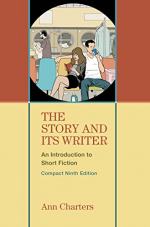|
This section contains 411 words (approx. 2 pages at 400 words per page) |

|
Bullet in the Brain Summary & Study Guide Description
Bullet in the Brain Summary & Study Guide includes comprehensive information and analysis to help you understand the book. This study guide contains the following sections:
This detailed literature summary also contains Quotes and a Free Quiz on Bullet in the Brain by Tobias Wolff.
The following version of this story was used to create this study guide: Wolff, Tobias. “Bullet in the Brain.” Our Story Begins. New York: Alfred A. Knopf, 2008. Pages 263 – 268.
The story opens in a bank. Anders, a curmudgeonly literary critic, arrives shortly before the bank’s closing time, and he is frustrated by the long line. When a woman in front of him complains about the bank staff, Anders mocks the woman for complaining about something trivial. Ironically, Anders had been having similar thoughts mere moments before. Suddenly, two armed robbers wearing ski masks enter the bank and proceed to steal money. Anders reflexively comments on the various cliché aspects of the situation. The woman in line urges Anders to be quiet. One of the robbers approaches Anders with a pistol and tells him to stop talking.
Anders and the robber look at each other in the eyes. The robber is so close that Anders can smell the robber’s breath, and Anders feels unsettled. The robber tells Anders to stare at the ceiling, and Anders does so. Anders notices that the ceiling is decorated with painted images of various mythological figures. Anders views the painted images as poorly done and overly pretentious. He considers the paintings to be comically bad, and he involuntarily laughs aloud. Anders’ laugh irritates the robber, who again threatens Anders and tells him to stop talking. The robber’s verbal clichés cause Anders to laugh again. The robber then shoots Anders in the head.
The bullet kills Anders, but the narrative says that Anders has one final involuntary memory in the moment before his death. The narrative briefly digresses to a litany of things from Anders’ past that he does not recall in that moment. The list includes various things in his life that used to bring him joy but no longer do, such as his family, his work, and his love life. The narration also alludes to Anders’ tense home life as a child, due mostly to an apparently abusive father. The things that Anders does think of in his final moment of life is a summer day from his childhood when he played a game of baseball with a group of local boys. One boy brought along his cousin, who was from out of town and who had a regional dialect that Anders had never heard before. Anders enjoyed the game and was especially fascinated by the boy’s accent.
Read more from the Study Guide
|
This section contains 411 words (approx. 2 pages at 400 words per page) |

|



